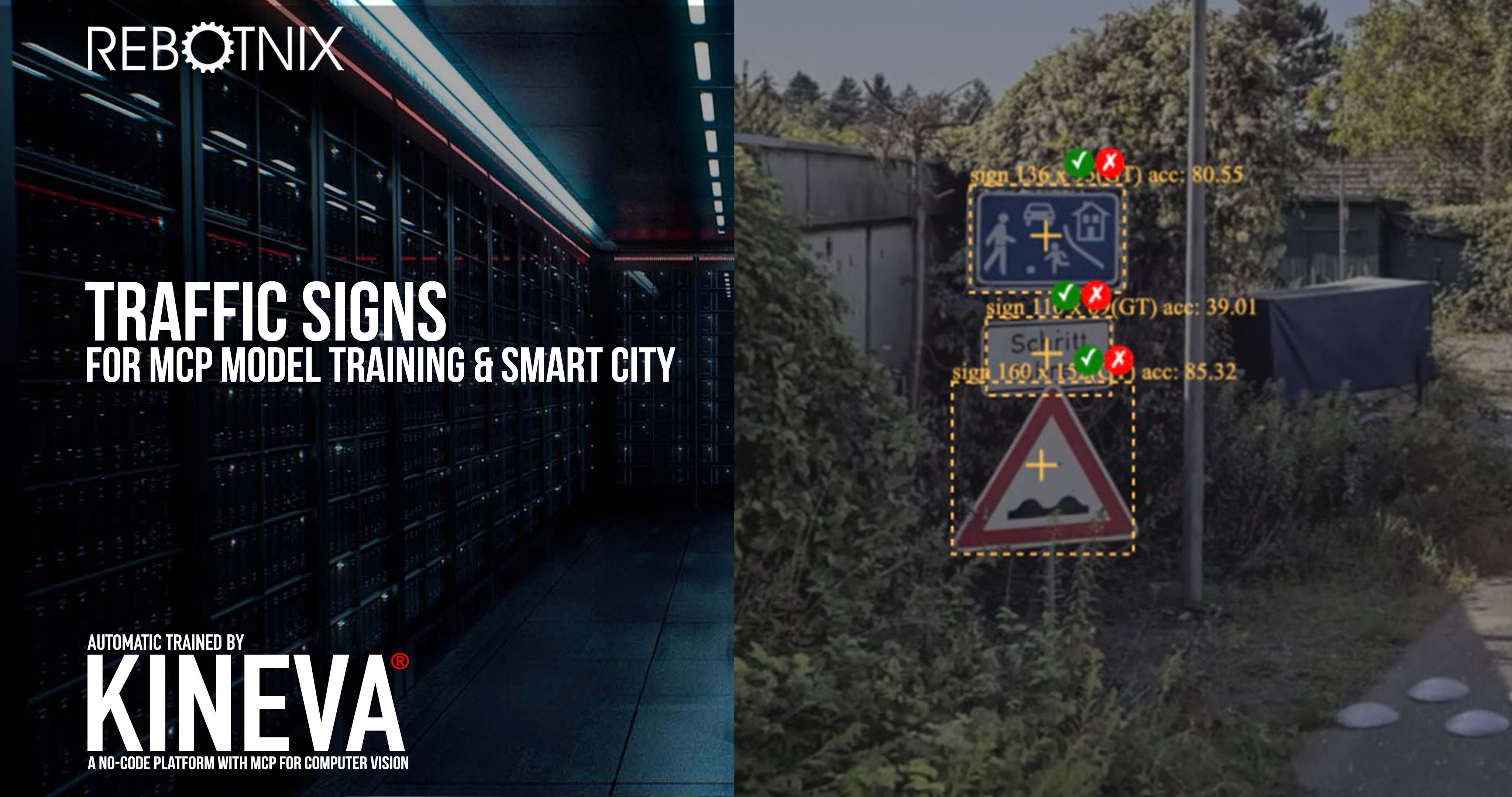Model Card for rebotnix/rb_trafficsign
🚀 Traffic Sign Detection – Trained by KINEVA, Built by REBOTNIX, Germany Current State: in production and re-training.
This object detection model identifies traffic signs in street imagery. It has been trained on a curated dataset containing a diverse set of traffic sign types, backgrounds (negatives), and lighting conditions. The model is designed to support research and automation use-cases in the fields of traffic monitoring, automotive in general and urban planning.
Developed and maintained by REBOTNIX, Germany, https://rebotnix.com
About KINEVA
KINEVA® is an automated training platform based on the MCP Agent system. It regularly delivers new visual computing models, all developed entirely from scratch. This approach enables the creation of customized models tailored to specific client requirements, which can be retrained and re-released as needed. The platform is particularly suited for applications that demand flexibility, adaptability, and technological precision—such as industrial image processing, smart city analytics, or automated object detection.
KINEVA is continuously evolving to meet the growing demands in the fields of artificial intelligence and machine vision. https://rebotnix.com/en/kineva
🛑 Example Predictions
| Input Image | Detection Result |
|---|---|
 |
 |
 |
 |
 |
 |
(More example visualizations coming soon)
Model Details
- Architecture: RF-DETR (custom training head with optimized anchor boxes)
- Task: Object Detection (Trafficsign class)
- Trained on: REBOTNIX Traffic Sign Dataset (proprietary)
- Format: PyTorch
.pth+ ONNX and trt export available on request - Backbone: EfficientNet B3 (adapted)
- Training Framework: PyTorch + RF-DETR + custom augmentation
Chart
Dataset
The training dataset consists of high-resolution street imagery collected from:
- Open-source archives
- Custom annotated bounding boxes by REBOTNIX team
The model was trained to be robust across:
- Different backgrounds (urban, rural)
- Partial occlusions
- Different traffic sign types (danger signs, directional signs, regulatory signs)
Intended Use
| ✅ Intended Use | ❌ Not Intended Use |
|---|---|
| Autonomous vehicle training | Facial recognition |
| Driver assistance systems | Surveillance of individuals |
| Traffic infrastructure optimization | Weapon targeting |
| Road safety research | Non-traffic object classification |
Limitations
- False positives may occur in cluttered urban environments
- Not optimized for night-time or infrared imagery
Usage Example
import supervision as sv
from PIL import Image
from rfdetr import RFDETRBase
model_path= "./rb_trafficsign.pth"
CLASS_NAMES = ["trafficsign"]
model = RFDETRBase(pretrain_weights=model_path,num_classes=len(CLASS_NAMES))
image_path = "./example_trafficsign1.jpg"
image = Image.open(image_path)
detections = model.predict(image, threshold=0.35)
labels = [
f"{CLASS_NAMES[class_id]} {confidence:.2f}"
for class_id, confidence
in zip(detections.class_id, detections.confidence)
]
print(labels)
annotated_image = image.copy()
annotated_image = sv.BoxAnnotator().annotate(annotated_image, detections)
annotated_image = sv.LabelAnnotator().annotate(annotated_image, detections, labels)
annotated_image.save("output_1.jpg")
Contact
📫 For commercial use or re-training this model support, or dataset access, contact:
REBOTNIX
✉️ Email: [email protected]
🌐 Website: https://rebotnix.com
License
This model is released under CC unless otherwise noted. For commercial licensing, please reach out to the contact email.

